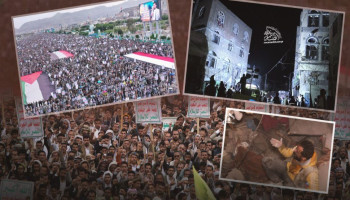The latest report issued by UNICEF in mid-December revealed that the number of Yemeni children who have been killed since the start of the war in March 2015 has reached more than 11,000. These statistics come at a time when Saudi Arabia is betting on the government in Sana'a to accept the conditions of the blockade, and legislating it through a mutual agreement as a prerequisite for extending the armistice, which was announced at the beginning of last April, and this is what the latter rejects due to the consequent humanitarian violations and economic and political repercussions that keep the country within a real catastrophe.
The United Nations Children's Fund (UNICEF) reports that more than 11,000 boys and girls have been killed or injured in the war in Yemen, an average of 4 per day since the war began, adding that "the number is likely to be much higher."
The executive director of UNICEF, Catherine Russell, who just concluded a visit to the country, also launched UNICEF's $10.3 billion Humanitarian Action for Children appeal to provide water, sanitation, nutrition, education, health, and protection services to children around the world affected by conflict and disaster. In addition, she noted that during the truce in Yemen, 62 other children were killed or injured in the period since the truce ended in early October and 30 November.
The report indicates that there were at least 74 children among the 164 people killed or injured by landmines and unexploded ordnance between July and September alone.
Yemen remains one of the worst humanitarian situations in the world. More than 23.4 million people, or three quarters of the population, need assistance and protection. More than half of them are children. UNICEF has estimated that 2.2 million young people suffer from acute malnutrition, including around 540,000 children under the age of five who suffer from severe acute malnutrition.
More than 17.8 million Yemenis lack access to safe water, sanitation and hygiene services, while the country's health system has been extremely fragile for years.
While only half of the health facilities are functioning, leaving nearly 22 million people – including around 10 million children – without access to adequate care.
6 million children without education
The education sector is also considered one of the most destroyed sectors by the war. This sector is considered the most affected by the war. It should be noted that schools have been a permanent target of the coalition, the most prominent of which is the Al-Rai school, east of the capital, Sana'a, in which a massacre was committed, killing 13 female students and injuring dozens of children.
UNICEF warned that Yemen is also facing a severe education crisis, which has dire consequences for children in the long term. It added that there are two million boys and girls currently out of school, which could rise to six million as at least one in four schools has been destroyed or partially damaged.
UNICEF also includes within its program, which it seeks to implement, to obtain about $ 484.5 million to respond to the crisis in Yemen throughout 2023, warning that the predictable lack of funding endangers the lives and well-being of children.
Despite the challenges, this year the Agency was able to implement interventions, including supporting the treatment of severe acute malnutrition, for more than 260,000 children. Almost 1.5 million households received emergency cash transfers every three months, benefiting nearly 9 million people.
UNICEF has also provided nearly 4.7 million Yemenis with access to safe and sustainable drinking water through trucking, installing distribution points, and expanding water supply systems for IDP camps.
Other actions included the providing of measles and polio vaccinations to at least 1.6 million children, and supporting maternal, newborn and child health services in 24 hospitals thought providing operational assistance, as well as equipment and supplies.







